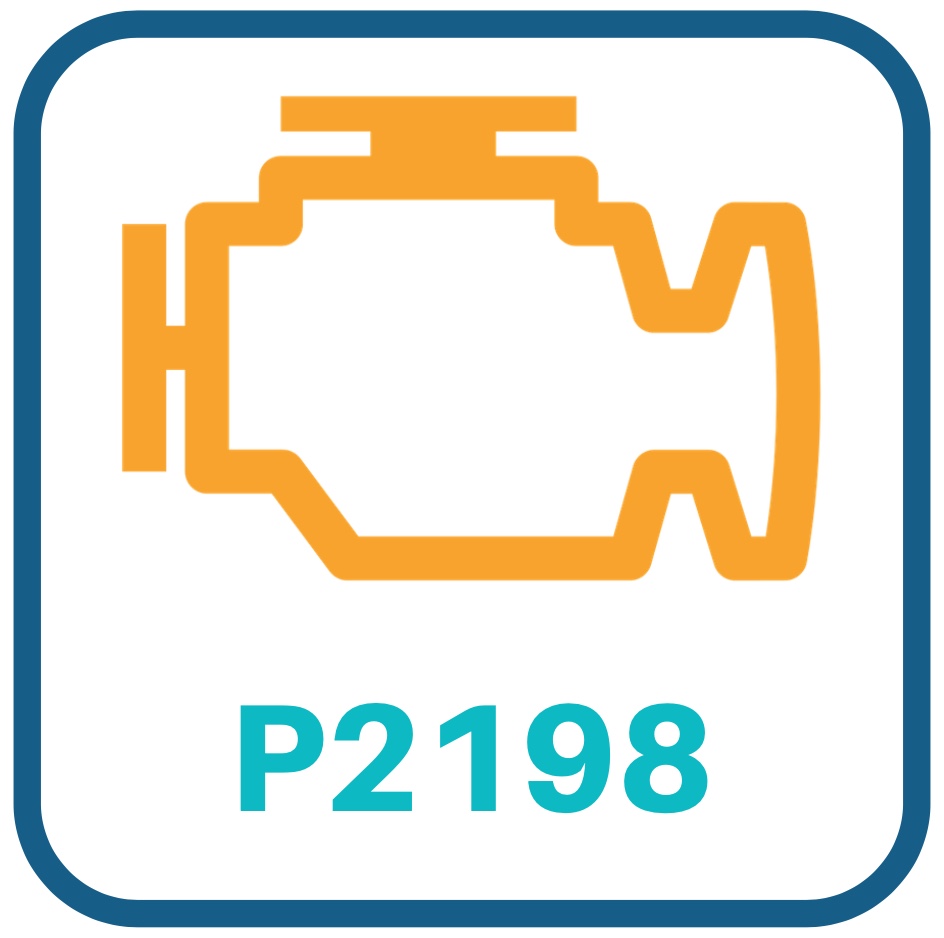P2198 is a generic diagnostic trouble code that indicates that your Mitsubishi Eclipse’s B2S1 O2 sensor signal is stuck rich. It does not necessarily mean that the vehicle itself is running rich (although it very well could).
DTC P2198 is most likely caused by a bad oxygen sensor, although there are many potential secondary causes.
P2198 Definition: O2 Sensor – Stuck Rich (Bank 2, Sensor 1)
O2 (Oxygen) Sensor
When you get P2198, the voltage level being recorded by the oxygen sensor is stuck on the rich side. Your Eclipse’s PCM uses the data from the oxygen sensors to adjust the air-fuel mixture for optimal combustion.
Stuck Rich
A rich condition means that there’s too much fuel in relation to air entering into the combustion chamber.
Bank 2
Bank two is the cylinder head with the second cylinder. On inline engines, you only have one head, and therefore one bank. With a “V” type engine, you need to determine which side of the engine has bank 2 (If you got P2198, your engine has two banks).
For the sake of diagnosing P2198 from home, having two cylinder banks is great news. It allows you to do the “swap test.” This involves switching your Eclipse’s bank 1 and bank 2 oxygen sensors to see if the code jumps to the other side of the engine (which would change the code to P2196).
The first cylinder is usually the furthest from the transmission (as a rule, it’s not definite for all engines). But, you can use this guide to help you determine where bank two is quick.
Sensor 1
Sensor one would be the first sensor when tracing the exhaust from the combustion chamber on bank 2 to the exhaust pipe. It’s usually at the end of the exhaust manifold or right where the exhaust manifold bolts up to the exhaust itself.
Mitsubishi Eclipse: P2198 Symptoms

Usually, there are symptoms associated with P2198. Here are the most common ones:
- Black/Sooty smoke from the exhaust
- Poor MPG
- Engine runs rough or down on power
Mitsubishi Eclipse P2198 Causes and Diagnosis

Below we have listed the most common causes of P2198; they are listed in ease of diagnosis, weighted with the likelihood of being the problem.
There are a lot of potential causes for P2198. Check your Eclipse for any other codes. If there are, they can provide valuable insight and help you eliminate a lot of possibilities.
1. Check the Wiring Harness at the O2 Sensor
The bank two sensor one oxygen sensor has a tough life. It is right there on the hot exhaust; it also has to deal with a lot of engine vibration. In addition, the wiring harness to the sensor will fail more than almost any other automotive wiring.
Check your Eclipse to see if this wiring harness is burnt or frayed. Ensure that the pigtail that plugs into the sensor is snugged in tight and has no damage itself. You can do this pretty quickly with a flashlight. You can usually see the oxygen sensor without having to take anything apart.
You can use a multimeter to determine if there’s a short or open circuit. This article can make you an expert on the subject in no time. Here’s more on diagnosing a bad oxygen sensor in the Mitsubishi Eclipse.
2. Swap Test
We briefly discussed the swap test earlier. Basically, it involves removing the B2S1 O2 sensor and replacing it with the B1S1 sensor.
If you don’t want to get your hands dirty and are comfortable with a scan tool, skip this part and move straight on to capturing the short-term and long-term fuel trim values below.
Here’s how to do the swap test:
- First, clear the DTC codes with your scanner.
- Swap the Bank 2 Sensor 1 O2 sensor with the Bank 1 Sensor 1. They’ll be on or right after the exhaust manifold on each side.
- Run your Eclipse until the check engine light comes back on.
- If the code changes to P2196 (which indicates the O2 sensor on Bank 1 is stuck lean), that is enough proof that you need a new O2 sensor.
- If the code remains P2198, you’ll need to continue pursuing your diagnosis, knowing that both O2 sensors are working fine.
3. Capture the Short/Long Term Fuel Trim Values
If you happen to have access to a scan tool, you can use it to capture the short and long-term fuel trim values. You’ll need to make sure that the engine is warmed up before you do this.
Doing this will help you determine if the O2 sensor is operating within spec without looking under the hood. You’ll need to compare the values that you capture with your tool with the values the manufacturer specifies.
Compare the values to what the B1S1 sensor is seeing. There shouldn’t be much difference.
While this isn’t a skill most DIY mechanics have, the concept is simple, and you can learn enough to use fuel trim to your advantage by watching this 11-minute video (it’s worth it).
4. Vacuum Leaks
Often a worn or brittle vacuum line will allow unmetered air into the engine. When this happens, it creates a lean condition. While P2198 indicates that the signal is “stuck rich” the vacuum leak could affect bank 1 more than bank 2, which would allow bank 2 to overcompensate, thus over richening.
You can test your Mitsubishi Eclipse for a vacuum leak around the vacuum lines and the intake manifold. A common method is to spray carb cleaner around the intake/vacuum lines. When the spot is found, the engine will rev higher with no throttle input.
Obviously, carb cleaner is super flammable. So be CAREFUL. Make sure you have a form of fire suppression available to you.
5. Other P2198 Causes
The steps listed above cover the most common causes of P2198. The trouble with this code is that many other things can cause it as well.
Here are other things that can cause P2198:
- Bad MAF sensor
- Fuel pressure is too high (bad fuel pressure regulator usually)
- PCV system leak (cracked hoses going from the head to the intake)
- Bad fuel pressure sensor
- ECT Sensor
Mitsubishi Eclipse P2198: Bottom Line
A bad oxygen sensor usually causes P2198.
Doing your due diligence can save you a lot of time and wasted money/effort. Good luck repairing your Eclipse!

